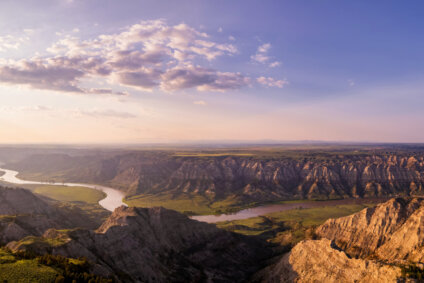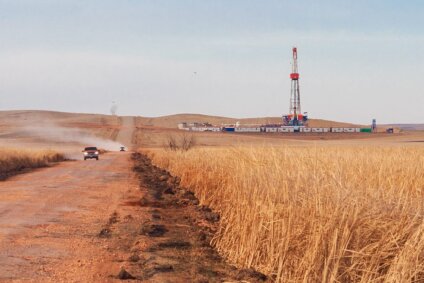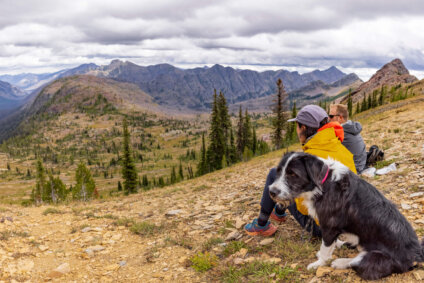Protected
A long history of local efforts to protect the Rocky Mountain Front culminates with the passage of the Heritage Act
In the summer of 1977, a group of people living along the Rocky Mountain Front learned in an outfitters meeting that the U.S. Forest Service planned on issuing leases for oil and gas development up and down the Rocky Mountain Front.
That was the day, one might argue, that the seed for the Rocky Mountain Front Heritage Act was sown. People who lived and worked along the Front – including a school teacher, a rancher, a taxidermist, an outfitter, a lawyer, and a backcountry horseman – realized that their backyard, and one of Montana’s most cherished and iconic landscapes, was at grave risk. They decided to fight back against those leases, and they eventually won.
Starting with the Blackfeet, people along the Front have always known they live someplace extraordinary. The Blackfeet consider the Front the “backbone of the world” and trekked to its peaks and ridges questing for visions. The Europeans who later settled here took part in establishing, in 1913, the Sun River Game Preserve, helping bring Montana’s elk herd back from the brink of extinction. In 1964, locals fought for passage of the Wilderness Act, because it established the Bob Marshall Wilderness in their backyard. In 2006, locals persuaded the federal government to withdraw mineral leases on the Front. At every turn, local people have fought for protection of the Front.
In 2007, after years of input from the public, the Forest Service issued a travel plan for the Front that focused on traditional recreation and minimized motorized use. This conservation-minded plan helped galvanize the same group that fought the oil and gas leases back in the 1970s and inspired them to start work on a piece of legislation that would permanently protect the Rocky Mountain Front. Their passion brought fresh blood to the table, including a slew of Montana Wilderness Association volunteers and staffers.
After several years of pouring over maps spread across kitchen tables, drawing and redrawing the lines on the map, the Heritage Act began to take shape. Several more years of public meetings resulted in more changes and a final product that a consensus of people on the Front and in the rest of Montana could agree to.
In recent years, MWA’s Rocky Mountain Front Field Director Casey Perkins has worked closely with local advocates in hammering out the details of the Heritage Act and getting it from the Front to the halls of Congress.
“The Heritage Act is as much about the people who live along the Front as it is about the limestone reefs, the mountains, and the wildlife that populates them,” she says. “This is a bill written with the hearts and souls of the people who make this part of Montana home and love it like no one else.”
On December 10, 2014 some 34 years after that first meeting to talk about fighting back against the oil and gas leases, many from that original group met in a hotel conference room in Choteau for a routine meeting of the Coalition to Protect the Rocky Mountain Front, an organization that evolved from those early meetings in the late 1970s. At the beginning of the meeting, they learned that Montana’s entire Congressional delegation was about to hold a press conference in Washington, D.C. to announce that the Heritage Act was included in a public lands package being considered by Congress. The entire Front was poised for permanent protection.
Gene Sentz, the school teacher from Choteau now retired, didn’t quite know what to say after learning about the press conference. “It’s just amazing this is even being considered,” he said.
“It’s a testimony to community leadership,” the taxidermist from Pendroy, Roy Jacobs, said. “It never hurts to dream big. If this happens, we’ve protected an ecosystem.”
Later, after the Congressional delegation finished the press conference, Sen. Jon Tester called the group meeting in Choteau.
“Today is a big day because we haven’t had a wilderness designation in 30 years, and we are on the cusp of that,” the Senator told the group. “This is due in good part to the kind of work you have done, to lay the foundation for us to go back here and move this forward. This would not have happened without your advocacy and the work you’ve done over many years to make this come to fruition.”
There was not a group of people that day in Montana more elated.
The rancher from Dupuyer, Karl Rappold, was rendered speechless after learning the Heritage Act was on the cusp of passage. Earlier, he had said, “I want my grandkids and their kids to experience the Front the way I do today. We’ve been leading on this bill here at home for a long time now. Let’s hope that Congress will take the reins and pass the Heritage Act.”
And that’s exactly what Congress did today.
Stay Connected
"(Required)" indicates required fields


